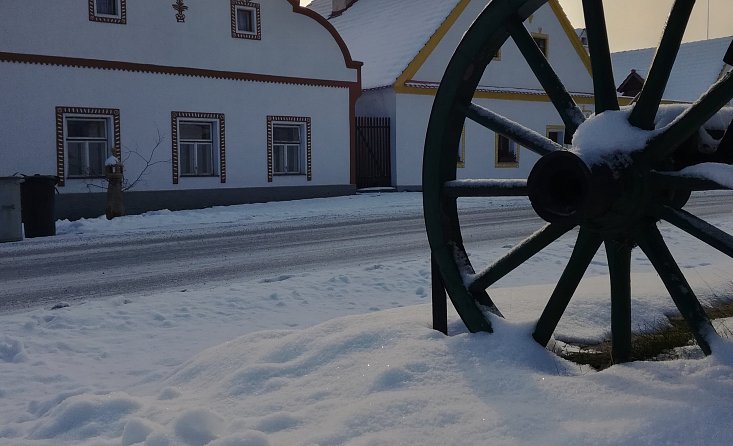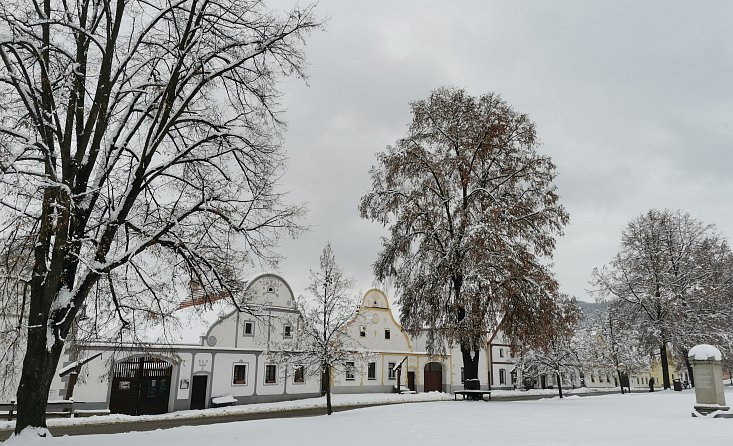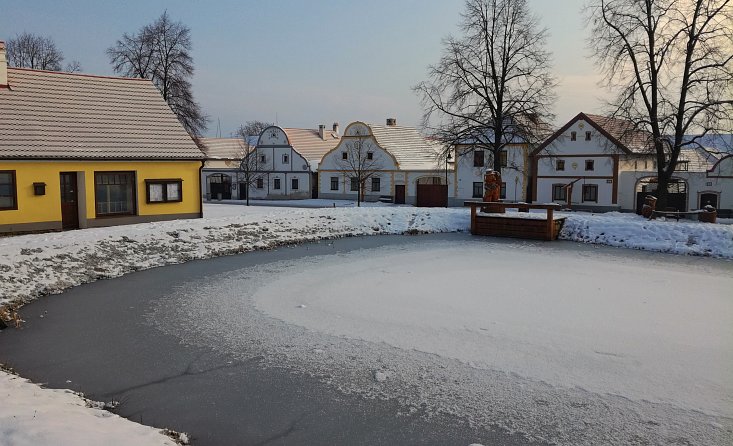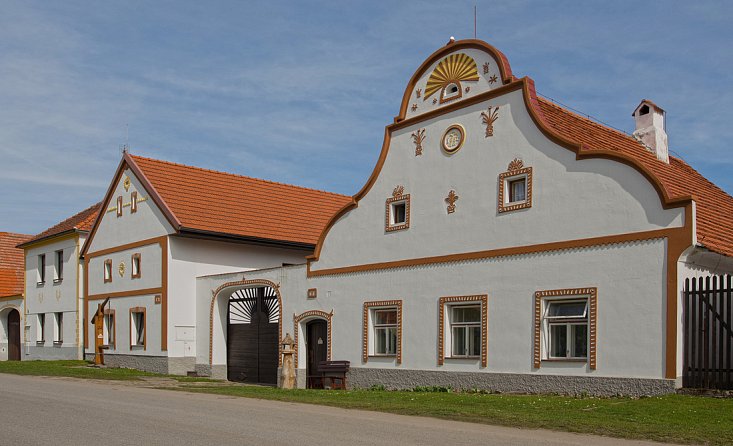



When one hears the name Holašovice, the immediate association could be the phrase “Rustic Baroque”. The village of Holašovice is the most representative and best preserved example of advanced traditional folk construction. Its present appearance documents how a typical South Bohemian village would have looked, built around the first half of the 19th century.
The period of construction was caused by the economic bloom of Czech villages in the 19th century. In Holašovice, this happened between roughly 1840 and 1855 through the reconstruction of what had previously been wooden barns. The main motivation was the rural class, wishing to represent itself and its increasing wealth, resulting in the emergence of a phenomenon of peasant Baroque architecture that has no equal elsewhere in Europe. The richly decorated façades of the houses with their wide volute gables provide a testimony to the imaginativeness and skill of rural builders. Inscriptions or motifs decorating the houses’ gables, boasting the professions of property owners are no exception. The oldest buildings are two late medieval granaries from the beginning of the 19th century. Heritage institutions as well as state and local authorities strive to preserve Holašovice as a normal living village dominated by permanently residential settlements.
The village’s information center is located in the former schoolhouse. Every year at the end of July, Holašovice holds a 3-day Rustic Festival, and 2017 marked its 20th Anniversary. In 1998 Holašovice was registered on the UNESCO List of Cultural and Natural Heritage.